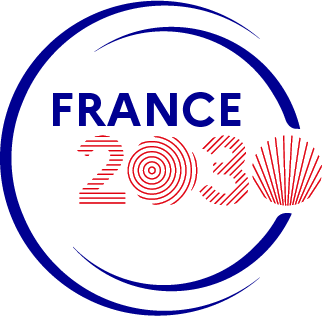The E2S RODAM research project, for Robust Optimal Design under Additive Manufacturing constraints, came to an end in December 2024. Led by Marc Dambrine, professor at the Pau Laboratory of Mathematics and its Applications (LMAP), in partnership with Safran Helicopter Engines, its main objective was to design optimized, 3D-printable mechanical parts for helicopters.
The goal was to reduce the weight of mechanical components, thereby saving fuel, without sacrificing safety. The challenge was to find a shape with the smallest possible volume while respecting mechanical constraints to prevent damage to the part.
While topological optimization has been an integral part of commercial part design codes since the 2010s, these do not take into account parameter uncertainties, which are nonetheless present. For example, the vibrations or temperature differences that occur during actual helicopter operation create numerous uncertainties linked to the forces exerted on the parts (these external forces, which can deform the parts, are called “loads” in structural mechanics).
The novelty and interest of the work was to take into account the uncertain aspect of the loads applied to the structure in the process of optimizing it to obtain a robust design with respect to the loads. Robustness can be defined as the ability of a system to resist change without adapting its initial stable configuration.
A more resource-efficient computing method
Until now, this important issue had been tackled by business engineers working with some twenty representative scenarios selected on the basis of their knowledge of the system. They then used the worst-case scenario to avoid taking any risks. The RODAM project was able to demonstrate, under reasonable assumptions, that by taking a number of scenarios approaching infinity, this approach converges towards the desired solution. Obviously, the more different scenarios are considered, the more expensive it is in terms of computing power. The RODAM team proposed a second method during the course of the project, which is much more economical in terms of computing resources for the same degree of precision.
The paper “Shape optimization under a constraint on the worst case scenario” was published in Society for Industrial and Applied Mathematics (SIAM) Journal on Scientific Computing, one of the leading applied mathematics journals dedicated to computation.

Top: the original component, bottom: the optimized component.
Indeed, the “worst case” approach is often very pessimistic, as it only looks at the most unfavorable configurations, which very rarely occur. Imagine playing a dice game where you double your bet on any result other than 1 and lose it on a 1. This approach tells you not to play because you can lose. But on average, you can win... and you'd rather feel like playing.
Researchers at RODAM have thus considered a probabilistic distribution of loads. This approach is made possible by access to actual loading data available to engineers. This allowed us to consider constraints on the optimization problem based on averages, or more generally on the moments of mechanical criteria defined by the engineers, or even on notions of risk: for example, controlling the probability of reaching the threshold of plasticity, i.e. irreversible deformation likely to cause breakage.
The RODAM team obtained theoretical results and demonstrated the feasibility of this approach on semi-industrial examples. The cost in computational resources has also been studied. The corresponding works are available on the HAL open research archive and have been submitted to journals. Although they were carried out in close collaboration with Safran Helicopter Engines, they are also of interest to a wider audience: for example, a thesis was defended in front of Safran's Research Director and a structural optimization project manager from 3D design software publisher Ansys.
A wide range of applications
The field of application is not restricted to the optimization of elastic structures. Other work carried out as part of a PhD thesis within the project has focused on the optimal hull of boats (how to build the hull to lose as little energy as possible), or on reverse homogenization (mixing of materials) in the context of additive manufacturing.
Work published in the Journal of Computational Physics focuses on the optimization of structures subject to uncertain heat waves, or to the coupling of one or more fluid flows with heat. The team was able to show how to insulate a plumbing pipe optimally at elbows, or how to improve the shape of coils to maximize heat exchange while controlling pressure drop.
The mathematical techniques introduced during this “scientific challenge”, which in France are only used at Pau and the École Polytechnique, will enable hands-on projects of all kinds to be tackled.

